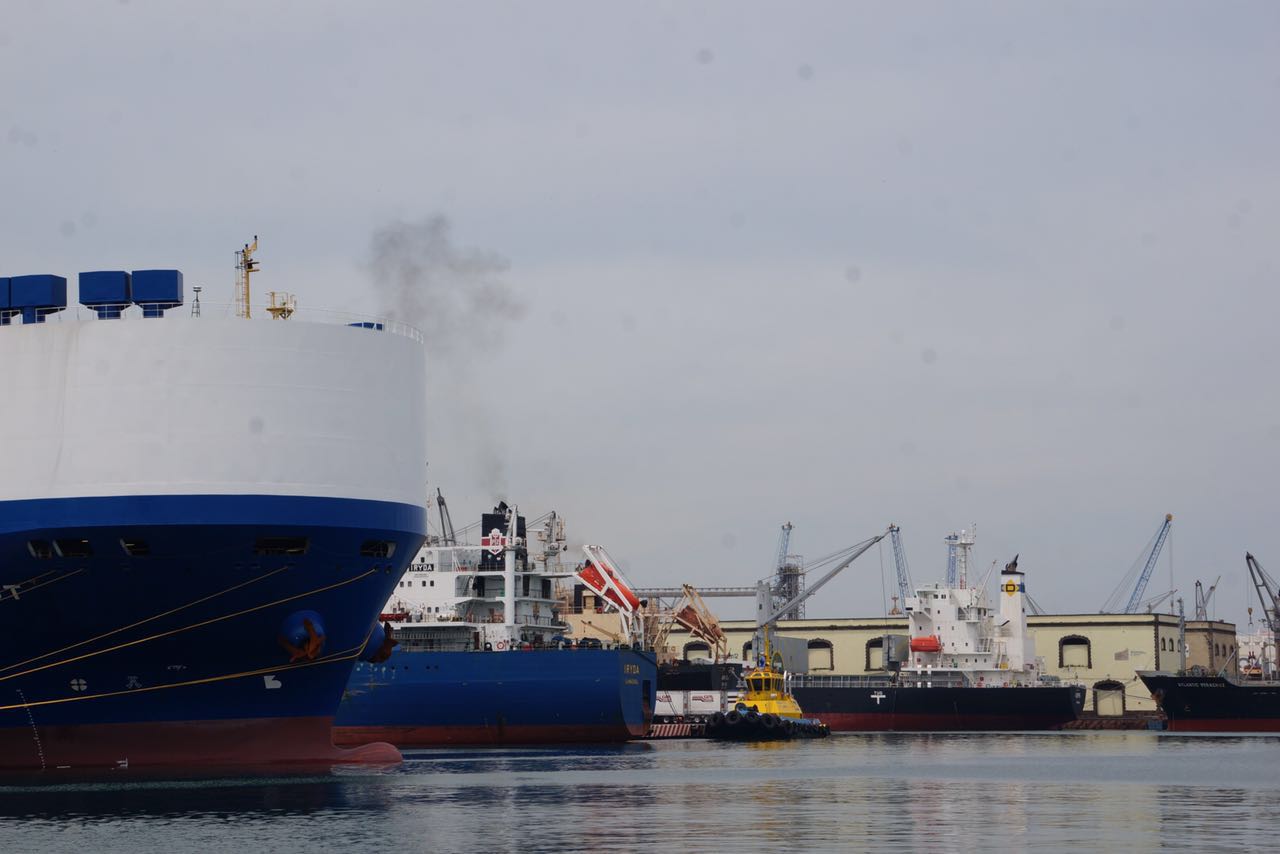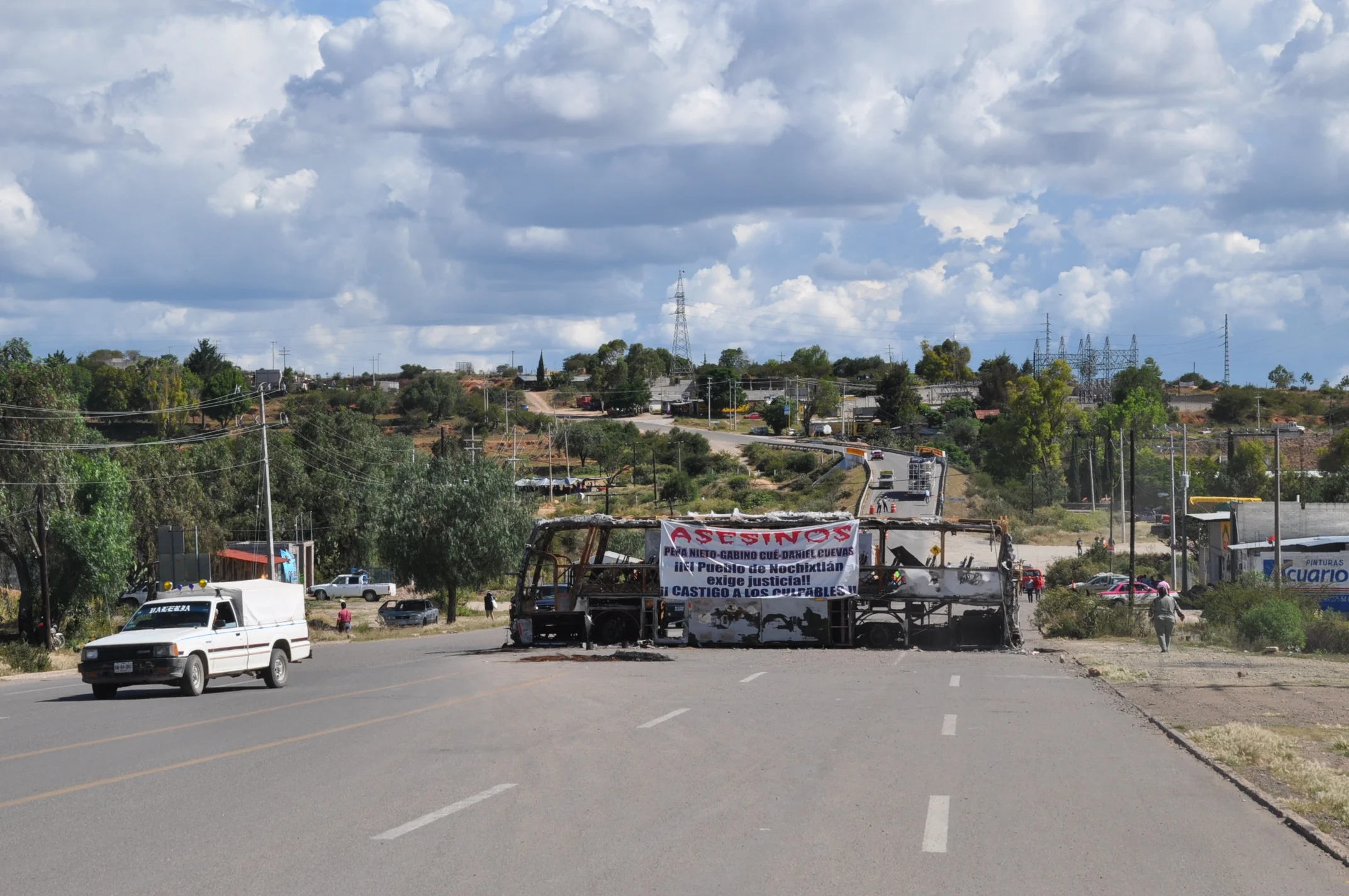Pirates of the land
The city of Veracruz, on the Gulf of Mexico, has always been an important shipping centre. It was here, in 1519, that Hernan Cortez landed in the country and began his conquest of the Aztecs; that the Spanish founded their first city; and that the port and major gateway to Mexico, for over 400 years, was developed.
Conquistadors, immigrants, slaves, precious metals, goods and commodities have all passed through Veracruz. So have pirates and invading British, French and U.S. navies. The impressive San Juan de Ulúa fortress, built to protect the harbour, is testimony to these raids.
Bulk carrier in Veracruz port
Nowadays, however, it is not galleons or pirate ships that dominate Veracruz’s harbour but huge merchant vessels. Unlike many large commercial ports, which increasingly are located away from city limits, Veracruz wraps around its port; it is part of the city’s furniture. Walking along the malecón, you are dwarfed by container ships, tankers and ro-ro vessels, and feel as if you are in the heart of Mexico’s shipping industry. Tourists walking around the fortress of San Juan de Ulúa, snapping photographs, are a stone’s throw from the myriad of cranes loading containers onto ships.
San Juan de Ulúa
Veracruz is no longer Mexico’s major port. As a sign of the increasing importance of Asia and the west coast of America to Mexico’s economy, overtaking the strategic importance of the Atlantic coast and Europe, Mexico’s two largest ports – Lazaro Cardenas and Manzanillo – are located on the other side of the country, on the Pacific. But Veracruz remains the main gateway to Mexico’s capital, Mexico City, and has become an important centre of petroleum shipments. It is the third largest port in Mexico (the 18th busiest in Latin America) with an annual cargo tonnage of over 20 million.
As such, the strategic importance of Veracruz is recognised by the Mexican government, and it is well defended with a large naval presence. In the port are moored a number of Marine interceptor speed boats and a large Navy patrol vessel. Authorities also maintain strict counter-narcotic operations.
Veracruz container terminal
But as a local shipping professional informed me on a trip to Veracruz last week, “the major security threat is not in Veracruz itself, or from the sea, but from modern, land-based pirates between here and Mexico City”.
Freight theft inland is a persistent problem throughout Mexico, and the U.S. security firm Freightwatch International reported in 2013 that billions of dollars’ worth of cargoes were lost annually in the country. Currently, the high risk areas for freight transportation are concentrated between the cities of Queretaro, Mexico City and Veracruz. The usual targets are products that can be transported and resold easily: food, alcohol, cigarettes, building supplies; but increasingly sophisticated criminal groups will run operations targeting valuable items, including metals and fuel, which are planned and not solely opportunistic. Even car shipments, with Mexico’s major automotive manufacturers predominately exporting through Veracruz, are targeted.
Container en route to Veracruz
The most common form of theft is by hijacking – while the cargo is in transit between source/destination and port. A political risk analyst told me that criminal groups create obstacles for trucks, forcing the driver to stop and allowing thieves to either grab control of the vehicle or force the driver to divert the cargo to another site, where goods can be offloaded. Hijackers even pose as police officers or wait for unsuspecting trucks at service stations. “For this reason, drivers are instructed not to take stops during trips and stick to main highways regardless of traffic”. Increasingly, logistics and shipping companies are employing armed security guards who escort the freight. En route to Veracruz, I saw one such convey, with a marked security car following two trucks hauling Maersk containers.
But paying for security is expensive. Another option is GPS tracking to monitor shipments. The head of a large coffee trading company explained that they had had multiple cases of stolen goods and therefore plant surveillance trackers in the containers which they can monitor. This has allowed them to track down missing containers with the help of the police.
Maersk containers waiting to be transported
Worryingly, the coffee trader also highlighted another issued that had been exposed from using GPS tracking. That is the involvement of staff. “In our case, theft dropped almost completely once we started using trackers, hence our suspicion that someone within the logistics department had been working with the gangs, or at least forced to work with them. In one incident, when a tracking device was not put on a container, it was stolen. Was this coincidence?” The company eventually discovered that one of the warehouse managers was working with the thieves, and pressurising his team to help in the scheme also.
There is a freight railway link between Veracruz and Mexico City, known as Ferrosur, which has been improved in recent years which is seen as a safer option. As such, since 2013, there has been a marked increase in the use of the railway to transport goods. As an example, container shipper COSCO transports over 50,000 containers annually by rail in Mexico. Trains are harder to steal from as they cannot be stopped, and they do not stop for breaks. But the railway network in Mexico is not extensive, so most of the country can only be reached by truck, and capacity is still limited. Furthermore, trucks are often much faster as the trains between Veracruz and Mexico City have to wind slowly over the Sierra Madre mountains.
A lorry train
The high seas have always had an aspect of danger. Shipping is an invisible industry to most, despite its importance to moving almost everything we use, and commercial vessels can often be vulnerable in international and unprotected waters. But this vulnerability should not be allowed to emerge onshore. Shipping is far to valuable to Mexico’s economy as a manufacturing nation. It should not be just the shipping and logistics companies employing extra security measures, the authorities need to act.
Offshore support vessel moored off Veracruz's malecón












